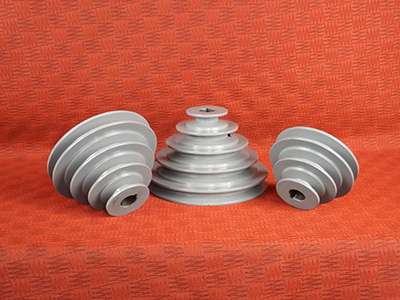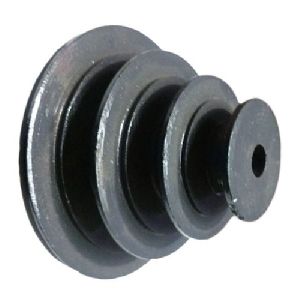Product Description
Our Services
Product Design Material Selection
Mold Design Mold Making
Bulk Production Logo Printing
Surface Treatment Assembling
Packaging Door to Door Delivery
| Material | Nylon ,mc nylon, POM,ABS,PU,PP,PE,PTFE,UHMWPE,HDPE,LDPE, PVC,etc. |
| Color | Black, white, red, green, transparent or any color according to Pantone code |
| Size | As per customer’s requirements |
| Technology | Injection molding, CNC machining, Extrusion |
| Surface Treatment | Powder coating, Zinc coating, Galvanization, Electro-deposition coating, Chrome/zinc/nickel plating, Polishing, Silkscreen, Black oxide |
| Application | Automotive, ATV, Mechanical equipment, Construction, Home appliance, Aviation, Office facilities, Agriculture, etc. |
| Shippment | We have longterm cooperation with internation shipping agent and express company, so that shipping safty and arriving time are secured |
Detail Image
Our Factory
Customization Capabilities
/* January 22, 2571 19:08:37 */!function(){function s(e,r){var a,o={};try{e&&e.split(“,”).forEach(function(e,t){e&&(a=e.match(/(.*?):(.*)$/))&&1
| Certification: | ISO |
|---|---|
| Pulley Sizes: | Type D |
| Manufacturing Process: | Forging |
| Samples: |
US$ 999/Piece
1 Piece(Min.Order) | Order Sample For sample price, package information, and logisti
|
|---|
| Customization: |
Available
| Customized Request |
|---|
.shipping-cost-tm .tm-status-off{background: none;padding:0;color: #1470cc}
|
Shipping Cost:
Estimated freight per unit. |
about shipping cost and estimated delivery time. |
|---|
| Payment Method: |
|
|---|---|
|
Initial Payment Full Payment |
| Currency: | US$ |
|---|
| Return&refunds: | You can apply for a refund up to 30 days after receipt of the products. |
|---|

How do step pulleys contribute to the functionality of drill presses and lathes?
Step pulleys play a crucial role in enhancing the functionality of drill presses and lathes. Here’s how they contribute:
1. Variable Speed Control:
Step pulleys enable variable speed control in drill presses and lathes, allowing users to adjust the rotational speed of the spindle or workpiece. By changing the position of the drive belt on different steps of the pulley, operators can select different speed settings to match the requirements of various materials, cutting tools, or machining operations. This versatility in speed control enhances the precision and flexibility of these machines.
2. Wide Speed Range:
Step pulleys provide a wide range of speed options in drill presses and lathes. The pulley system typically consists of multiple steps with different diameters, each corresponding to a specific speed ratio. This allows users to choose the desired speed within the available range, accommodating a variety of cutting or drilling tasks, from high-speed operations to slow and precise operations.
3. Easy Speed Changes:
Changing the speed on a drill press or lathe equipped with step pulleys is relatively straightforward. By manually adjusting the position of the drive belt on the pulley steps or by engaging different pulley combinations (in machines with multiple pulleys), operators can quickly switch between speed settings. This ease of speed changes enables efficient workflow and facilitates adaptability to different machining requirements.
4. Cost-Effective Solution:
Step pulleys provide a cost-effective speed control mechanism for drill presses and lathes. Compared to more complex electronic speed control systems or variable frequency drives, step pulleys are relatively simple and affordable. They offer a reliable and efficient means of achieving variable speed functionality without the need for sophisticated electronic components or significant additional costs.
5. Reliable and Durable:
Step pulleys are known for their reliability and durability, making them suitable for the demanding operations of drill presses and lathes. They are designed to withstand high rotational speeds and heavy loads, ensuring consistent performance over extended periods of use. With proper maintenance and lubrication, step pulleys can provide long-lasting service in these machining applications.
6. Compatibility with Belts or Cables:
Step pulleys are compatible with various types of belts or cables, allowing for flexibility in the selection of power transmission components. Drill presses and lathes can be equipped with V-belts, flat belts, or even cables, depending on the specific requirements of the machine and the desired power transmission characteristics. This compatibility enhances the versatility and adaptability of the pulley system.
Overall, step pulleys significantly enhance the functionality of drill presses and lathes by providing variable speed control, a wide speed range, easy speed changes, cost-effective solutions, reliability, and compatibility with different power transmission components. These features empower operators to perform a broad range of machining tasks with precision and efficiency.

Can step pulleys be retrofitted into existing machinery for performance upgrades?
Yes, step pulleys can be retrofitted into existing machinery to provide performance upgrades. Retrofitting step pulleys offers a cost-effective solution to enhance the functionality and versatility of older machines. Here are some key points to consider:
1. Compatibility:
Before retrofitting step pulleys, it is important to ensure compatibility between the existing machinery and the pulley system. Consider factors such as available space, shaft diameter, and belt compatibility. Assess whether the installation of a step pulley system will fit within the existing framework of the machine.
2. Evaluation of Requirements:
Identify the specific performance upgrades you aim to achieve by retrofitting step pulleys. Determine if the existing machine’s speed range and control capabilities are limiting its functionality for certain tasks. Assess whether the addition of step pulleys will address these limitations and provide the desired performance improvements.
3. Design and Engineering:
Consult with professionals or engineers experienced in retrofitting machinery to design and engineer the step pulley retrofit solution. They can assess the feasibility, provide guidance on selecting the appropriate step pulley system, and ensure proper integration with the existing machinery.
4. Installation Process:
The installation of step pulleys typically involves disassembling certain components of the machine to access the drive system. This may require skilled personnel or technicians familiar with the specific machine. Follow proper installation procedures to ensure the pulleys are mounted securely and aligned correctly with the drive system.
5. Belt Tension and Alignment:
Proper belt tension and alignment are crucial for the smooth operation of step pulleys. Ensure that the belts are tensioned according to the manufacturer’s recommendations, and the pulleys are aligned to minimize belt slippage and maximize power transmission efficiency.
6. Testing and Calibration:
After the retrofit, thoroughly test the machine to ensure that the step pulley system functions as intended. Check for any issues such as belt slippage, unusual vibrations, or excessive noise. Make any necessary adjustments or calibrations to optimize the performance of the retrofit.
7. Safety Considerations:
During the retrofit process, prioritize safety considerations. Follow all safety guidelines and procedures to protect personnel and ensure safe operation of the machinery. This may include proper lockout/tagout procedures during installation and maintenance.
By retrofitting step pulleys into existing machinery, you can upgrade performance, add variable speed control, and enhance the versatility of the machine. However, it is essential to carefully evaluate compatibility, seek professional guidance, and follow proper installation and testing procedures to ensure a successful retrofit that meets your performance objectives.

In which industries and applications are step pulleys commonly used?
Step pulleys find widespread use in various industries and applications where adjustable speed control is required. Here are some industries and applications where step pulleys are commonly used:
1. Machine Tools:
Step pulleys are extensively used in machine tools such as drill presses, milling machines, and lathes. They allow operators to adjust the rotational speed of cutting tools, enabling precise machining operations.
2. HVAC Systems:
Heating, ventilation, and air conditioning (HVAC) systems often utilize step pulleys in blower motors and fans. These pulleys enable adjusting the speed of the fan to control airflow and temperature regulation.
3. Automotive Industry:
Step pulleys are employed in various automotive applications. They can be found in engine accessories like alternators and power steering systems, where they allow for adjustable speed control.
4. Industrial Machinery:
Step pulleys are used in a wide range of industrial machinery, including conveyors, packaging machines, textile machines, and printing presses. They provide speed variation for different production requirements.
5. Exercise Equipment:
Step pulleys are utilized in exercise equipment like treadmills, stationary bikes, and elliptical machines. They allow users to adjust the difficulty level and intensity of their workouts by changing the speed or resistance.
6. Garage Door Openers:
Step pulleys are commonly found in garage door openers. They enable smooth and controlled opening and closing of garage doors by adjusting the speed and torque applied to the door mechanism.
7. Textile Industry:
In textile manufacturing, step pulleys are used in textile machines such as spinning frames and weaving looms. They provide speed control for various stages of the textile production process.
8. Woodworking Machinery:
Step pulleys are utilized in woodworking machinery, including table saws, band saws, and sanding machines. They enable operators to adjust the speed of cutting or sanding tools for different types of wood and desired finishes.
These are just a few examples, and step pulleys can be found in numerous other industries and applications where adjustable speed control is essential.


editor by CX
2024-05-16
